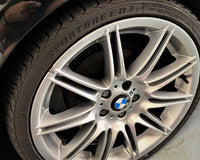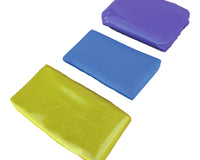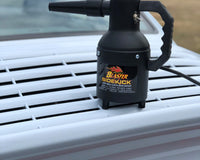Rain is an inevitable part of driving, but it can wreak havoc on your car’s exterior and interior if not properly managed. Protecting your vehicle from rain isn’t just about maintaining its shine but also preserving its value, reducing long-term maintenance costs, and ensuring safe driving conditions. This guide will explore the best methods to safeguard your vehicle from rain damage and keep it looking pristine year-round.
Why Rain is Harmful to Your Car
Rainwater may seem harmless, but it carries hidden dangers that can damage your car’s exterior and other components.
1. Acid Rain and Mineral Deposits
Rain often contains pollutants like sulphur dioxide and nitrogen oxide, which combine to form acid rain. When these droplets dry on your car’s surface, they can leave behind mineral deposits and acidic residues, damaging the clear coat and paint over time.
2. Water Spots and Etching
If rainwater is left to dry naturally on the car, it can lead to unsightly water spots. Over time, these spots can etch into the paint, glass, and chrome, leaving permanent marks that require professional detailing to remove.
3. Increased Corrosion Risk
Rainwater can seep into hard-to-reach areas such as undercarriages, seams, and wheel wells. If not cleaned regularly, this moisture can lead to rust and corrosion, compromising the structural integrity of your vehicle.
Preparing Your Vehicle for Rainy Weather
Proper preparation can prevent most rain-related damage to your vehicle. Here’s how to get your car ready.
1. Apply a High-Quality Wax or Sealant
Waxing your car creates a hydrophobic layer that causes water to bead up and roll off the surface. This makes it harder for dirt, minerals, and pollutants in the rainwater to stick to the paint.
- Use a synthetic sealant for long-lasting protection: Sealants typically last longer than natural waxes and offer better protection against acidic rain and UV damage.
- Apply wax at least every three months: Regular waxing ensures that your car remains protected throughout the rainy season.
2. Invest in a Ceramic Coating
For more durable protection, consider applying a ceramic coating. This advanced coating bonds with your car’s paint to create a strong, protective layer that repels water and prevents chemical damage.
- Ceramic coatings can last up to 2-5 years.
- They also enhance the gloss of your car, giving it a showroom-like finish.
3. Protect Your Glass
Rain can impair visibility, especially during heavy downpours. Applying a rain repellent to your windows and windscreen improves visibility by causing water to bead up and slide off quickly.
- Use products like Rain-X or Gtechniq glass coatings.
- Ensure wiper blades are in good condition to avoid streaking and scratching the glass.
During Rain: Tips for Minimising Damage
Once the rain starts, there are specific actions you can take to protect your vehicle further.
1. Park in Covered or Sheltered Areas
Whenever possible, park your car in a garage or under a covered area to prevent prolonged exposure to rain. If these options are unavailable, consider using a waterproof car cover designed for outdoor use.
- Choose a breathable car cover to avoid moisture build-up.
- Ensure the cover is properly secured to prevent it from flapping in the wind and scratching the paint.
2. Use Mudguards and Splash Guards
Mudguards and splash guards protect the lower areas of your car from mud, debris, and water kicked up during rainy drives. These inexpensive accessories reduce the risk of corrosion and keep your car cleaner for longer.

3. Clean Wiper Blades and Check Tyres
- Ensure your wiper blades are free from dirt and debris to maintain optimal performance in the rain.
- Check tyre tread depth and pressure. Adequate tread ensures better grip on wet roads, reducing the risk of hydroplaning.
Post-Rain Maintenance
Once the rain has stopped, giving your car the attention it needs to recover from exposure is essential.
1. Wash Your Car Promptly
Washing your car after rain prevents mineral deposits and acidic residues from settling on the surface. Use a pH-balanced car shampoo to neutralise harmful contaminants without stripping away wax or sealants.
- Focus on areas prone to water accumulation, like wheel wells and undercarriages.
- Use a two-bucket method to avoid scratching the paint with dirt particles.
2. Dry Your Car Thoroughly
Never let your car air-dry after washing, as this can lead to water spots. Use a soft microfibre drying towel or a car dryer to remove moisture without causing swirls or scratches.
- Pay special attention to crevices, where water tends to pool.
- Use compressed air to remove water from tight spaces like side mirrors and grilles.
3. Inspect and Repair Damage
After a rainstorm, inspect your vehicle for any signs of damage, such as chipped paint or rust spots. Address these issues promptly to prevent further deterioration.
Interior Protection Tips
Rain doesn’t just affect your car’s exterior—it can also wreak havoc on the interior if moisture finds its way inside.
1. Use All-Weather Floor Mats
All-weather floor mats are designed to trap water, mud, and dirt, keeping your car’s carpet clean and dry. These mats are easy to clean and highly durable.
2. Protect Upholstery and Leather
- Apply fabric protectors to cloth seats to make them water-repellent and easier to clean.
- For leather interiors, use a quality leather conditioner to maintain suppleness and prevent cracking from moisture exposure.
3. Check Door Seals
Damaged or worn door seals can allow water to seep into your car during heavy rain. Regularly inspect seals and replace them if they show signs of wear.
Why Regular Maintenance is Crucial
Consistent care and maintenance go a long way in protecting your vehicle from rain-related damage.
- Preventive Measures Save Costs: Investing in protection now can save you from costly repairs down the road.
- Enhanced Resale Value: A well-maintained car retains its value better, making it easier to sell or trade in.
- Improved Safety: Properly maintained tyres, wipers, and other components ensure safer driving in wet conditions.
Conclusion: Stay Ahead of the Rain
Rain doesn’t have to spell disaster for your car. By taking proactive steps to protect your vehicle before, during, and after rain, you can keep it looking great while avoiding long-term damage. Regularly washing, drying, and inspecting your car, along with investing in quality protective products, ensures your vehicle stays in excellent condition regardless of the weather.




